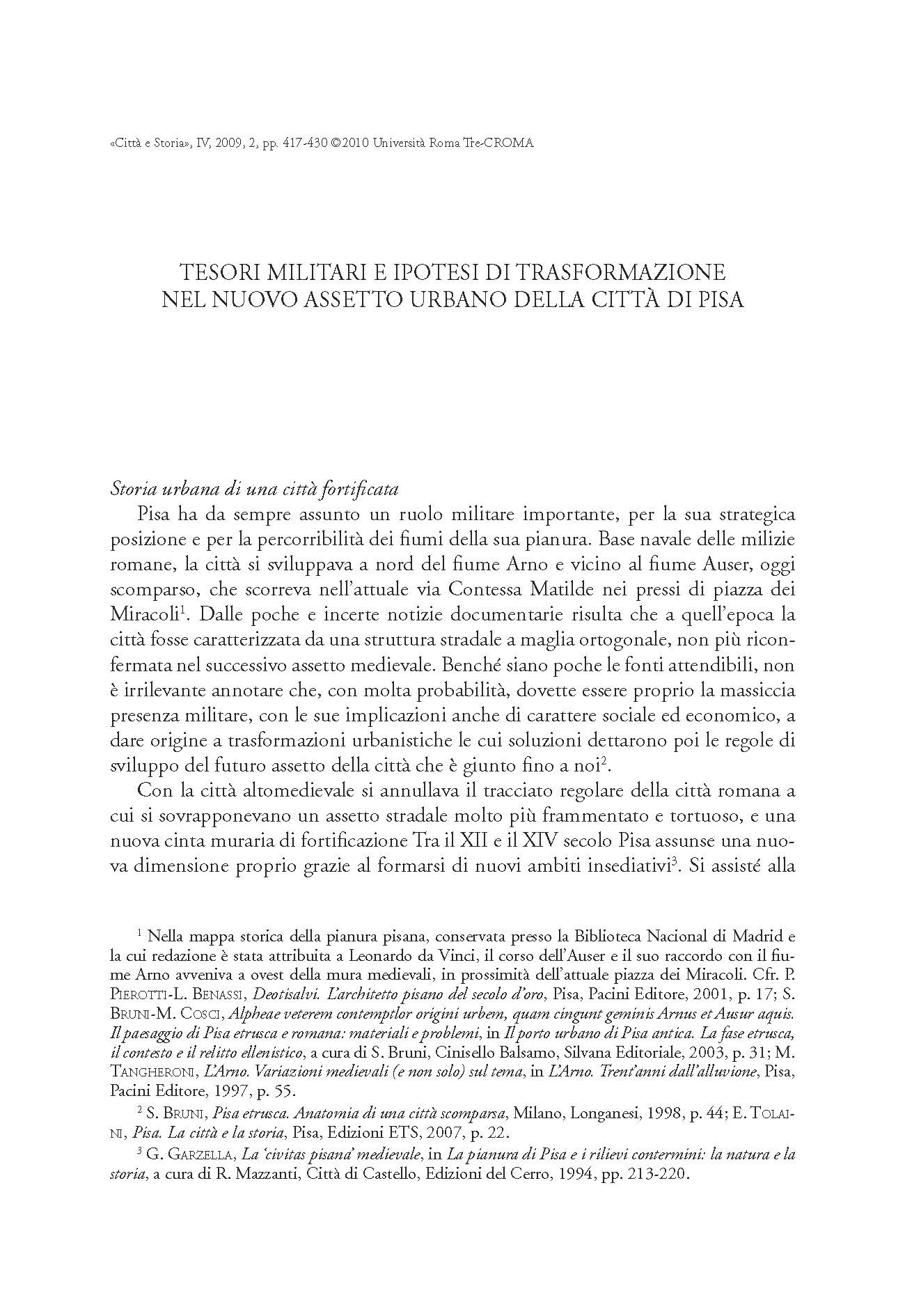Tesori militari e ipotesi di trasformazione nel nuovo assetto urbano della città di Pisa
6,00 €
The military role of the city of Pisa had important testimonies since the Roman, because the special geographical position and the extra-territorial links have certainly contributed to this role that was also his heavily urban development. Between 12th and 14th centuries Pisa took a new urban dimension, which is associated with an interesting economic and social development which end in 1405 when Florence conquered the city of Pisa with the help of Gabriele Visconti and the French. Under Florentine domination Pisa changed the planning and the architecture in order to respond to the military needs. The works of new fortification are realized by architects such as Giorgio Vasari, Antonio and Giuliano da Sangallo. These works are still partly preserved even if Pisa lost the military role, taking the character of residential and commercial city. The knowledge of this rich heritage today is a fundamental point of departure to understand the reasons and the current guidelines for the use and reuse of military buildings inside the city and described within this contribution.
The military role of the city of Pisa had important testimonies since the Roman, because the special geographical position and the extra-territorial links have certainly contributed to this role that was also his heavily urban development. Between 12th and 14th centuries Pisa took a new urban dimension, which is associated with an interesting economic and social development which end in 1405 when Florence conquered the city of Pisa with the help of Gabriele Visconti and the French. Under Florentine domination Pisa changed the planning and the architecture in order to respond to the military needs. The works of new fortification are realized by architects such as Giorgio Vasari, Antonio and Giuliano da Sangallo. These works are still partly preserved even if Pisa lost the military role, taking the character of residential and commercial city. The knowledge of this rich heritage today is a fundamental point of departure to understand the reasons and the current guidelines for the use and reuse of military buildings inside the city and described within this contribution.

